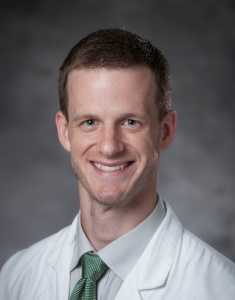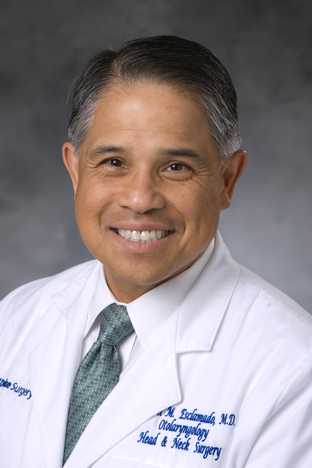Parotid Dissection (Cadaver)
Article Overview
Salivary gland tumors (SGT) are a relatively uncommon and morphologically diverse group of neoplasms, with an average annual incidence rate of 2.5–3.5 per 100,000.1 The majority of these tumors (approximately 80%) occur within the parotid gland (PG), which is the largest of the salivary glands.2 Interestingly, over 80% of PG tumors are benign in nature, with the most common pathologies being pleomorphic adenoma and Warthin's tumor.3
The treatment options for PG tumors depend on the nature of the tumor, whether it is benign or malignant. PG surgery has experienced a significant evolution in the last 20 years. While superficial parotidectomy (SP) was previously the standard of care at many centers, other operative options such as extracapsular dissection (ECD) and partial superficial parotidectomy (PSP) have gained popularity more recently.4,5
During the SP procedure, the affected region of the PG is surgically excised, while taking care to identify, preserve, and dissect away the facial nerve. The facial nerve emerges from the stylomastoid foramen before entering and branching throughout the PG, delineating the superficial and deep lobes of the gland. Regardless of the extent of parotid surgery, it is imperative to locate and carefully dissect the facial nerve to prevent iatrogenic injury and maintain normal facial nerve function.
Detailed preoperative evaluation is crucial, as different histological types of benign parotid tumors may require varying interventions. Pleomorphic adenoma and Warthin's tumor account for the majority of benign cases and often necessitate distinct surgical approaches.6 However, accurately diagnosing the malignant potential of a parotid mass preoperatively can be challenging, as fine-needle aspiration (FNA) and imaging studies do not always provide a definitive diagnosis.7 The sensitivity and specificity of PG FNA cytology depend on the operator’s technique, the quality of the specimen, the pathologist’s experience, and the presence or absence of cystic components.8–12 Therefore, surgeons must be prepared to escalate the procedure to a total parotidectomy if intraoperative findings indicate a malignant tumor. For example, despite the benign nature of certain PG lesions, complete surgical removal of the entire gland may be warranted in specific cases. This is because particular pathologies affecting the parotid demonstrate an elevated likelihood of recurrence if any remnant glandular tissue is left behind after the initial surgery.13
In cases of malignant tumors, a more extensive approach, such as total parotidectomy, is required. This procedure involves the removal of the entire PG, including the deep lobe, to ensure complete excision of the tumor. Surgical removal of the deep part of the PG is a complex procedure involving careful management of blood vessels within the gland, deeper facial vessels, and repositioning of the facial nerve main branch.14 The incision for a total parotidectomy is often larger and may extend into the hairline or neck, depending on the extent of the disease.15
The decision between superficial and total parotidectomy is made based on the preoperative evaluation, including imaging studies and FNA results, as well as intraoperative findings during the dissection. This detailed video provides an overview of the parotid dissection procedure, including the incision, raising of the flap, identification of key anatomical landmarks, and the dissection of the deep lobe of the PG.
The procedure is conducted under general anesthesia, with the endotracheal tube secured on the contralateral side. It's important to inform the anesthesia team to refrain from using muscle relaxants to allow for monitoring of facial nerve function. The neck is gently extended, and the head is turned away from the side being operated on. This procedure is typically performed through an incision within a natural skin crease or using a "gull-wing" approach to minimize scarring and optimize cosmetic outcomes.16 The choice depends on factors like postcontraction distortion and scar visibility. Following the incision of the dermis and platysma, an anterior skin flap is elevated between the superficial musculoaponeurotic system (SMAS) and the superficial capsule of the parotid. It is recommended to raise a thick flap to reduce the risk of Frey's syndrome and skin necrosis. The SMAS flap can be reattached to mitigate cosmetic deformity and reduce the risk of Frey syndrome. Particular attention is paid to avoid damaging the great auricular nerve and preserving its posterior branch if circumstances permit.17,18 The most challenging aspect of elevating the flap is the presence of the dense connective tissue band.
Subsequently, the parotid fascia is separated from the perichondrium of the cartilaginous canal of the external auditory meatus. The next step involves exposing it to the level of the tragal pointer. The tragal pointer serves as the first landmark, and the areolar appearance of the tissue around it guides the depth of the incision. The tragal pointer is identified, and the area around it is carefully cut through, ensuring not to go too deep.19 The location of the facial nerve lies around 1 cm deep and inferior to the pointer within the PG unless influenced by tumor presence or distortion.
Next, the focus shifts to locating the posterior belly of the digastric muscle. Initially, the tissue is observed, and the external jugular vein is identified and subsequently dissected. Upon tissue elevation, the posterior belly of the digastric muscle becomes visible. Once the the posterior belly of the digastric muscle is identified, the dissection becomes considerably easier, allowing for the removal of the surrounding tissue. Upon reaching the level of the the posterior belly of the digastric muscle and the tragal pointer, the tympanomastoid suture can be palpated as a hard ridge deep to the cartilaginous portion of the external auditory canal.
The next step involves traversing through the parotid fascia to ensure visibility. Continuing the dissection, a structure is encountered that is difficult to discern whether it is an artery or nerve, particularly in cadaveric specimens. The location aligns with where the nerve is expected to be, suggesting it may indeed be the facial nerve. By tracing the structure forward, its identity becomes clearer, indicating it is likely the facial nerve.
At this juncture, the surgeon should be prepared to commence the delicate and meticulous task of facial nerve dissection along its branches. It is important that dissection be performed directly atop the nerve, ensuring constant visualization. The parotid tissue overlying the dissected area of the facial nerve should be divided, never extending beyond that region. During the process, the retromandibular vein is frequently encountered deep to the facial nerve. When removing the superior portion of the gland, ligation of the superficial temporal artery may become necessary. Upon removal of the deep parotid lobe, the superficial lobe can be completely excised by the surgeon. Branches of the facial nerve should be released from the tissue of the deep lobe via a combination of blunt and sharp dissection techniques. If this proves challenging or inadequate, the transcervical approach with division of the stylomandibular ligament provides excellent exposure of the parapharyngeal space, which encompasses the deep parotid lobe.
Attention is drawn to the external carotid, deep transverse facial, superficial temporal arteries, and the retromandibular and superficial temporal veins, often overlooked vessels that must be identified and controlled. Once these vessels are managed, the deep lobe of the PG can be freed from the styloid process.
Parotid dissection is a delicate surgical procedure that requires a deep understanding of the relevant anatomy and a careful approach to ensure the preservation of critical structures, particularly the facial nerve. The comprehensive overview provided in this video is a valuable resource for understanding the step-by-step process of parotid dissection. The detailed narration and visual references help to reinforce the importance of accurate identification and preservation of the facial nerve, as well as the other key anatomical structures involved in the procedure. This information is crucial for surgeons in training, as well as for experienced practitioners, to ensure the safe and effective removal of PG tumors while minimizing the risk of complications.
Duke University Cadaver Lab Series
Check out the rest of the series below:
Citations
- Alsanie I, Rajab S, Cottom H, et al. Distribution and frequency of salivary gland tumours: an international multicenter study. Head Neck Pathol. 2022;16(4). doi:10.1007/s12105-022-01459-0.
- Bussu F, Parrilla C, Rizzo D, Almadori G, Paludetti G, Galli J. Clinical approach and treatment of benign and malignant parotid masses, personal experience. Acta Otorhinolaryngol Ital. 2011;31(3).
- Bradley PJ, Guntinas-Lichius O. Salivary gland disorders and diseases: diagnosis and management. Ann Royal College Surg Engl. 2013;95(6). doi:10.1308/rcsann.2013.95.6.450.
- Roh JL, Kim HS, Park CI. Randomized clinical trial comparing partial parotidectomy versus superficial or total parotidectomy. BJS. 2007;94(9). doi:10.1002/bjs.5947.
- O’Brien CJ. Current management of benign parotid tumors - the role of limited superficial parotidectomy. Head Neck. 2003;25(11). doi:10.1002/hed.10312.
- Kawata R, Kinoshita I, Omura S, et al. Risk factors of postoperative facial palsy for benign parotid tumors: outcome of 1,018 patients. Laryngoscope. 2021;131(12). doi:10.1002/lary.29623.
- Taniuchi M, Terada T, Kawata R. Fine-needle aspiration cytology for parotid tumors. Life. 2022;12(11). doi:10.3390/life12111897.
- Tyagi R, Dey P. Diagnostic problems of salivary gland tumors. Diagn Cytopathol. 2015;43(6). doi:10.1002/dc.23255.
- Song IH, Song JS, Sung CO, et al. Accuracy of core needle biopsy versus fine needle aspiration cytology for diagnosing salivary gland tumors. J Pathol Transl Med. 2015;49(2). doi:10.4132/jptm.2015.01.03.
- Rossi ED, Wong LQ, Bizzarro T, et al. The impact of FNAC in the management of salivary gland lesions: institutional experiences leading to a risk-based classification scheme. Cancer Cytopathol. 2016;124(6). doi:10.1002/cncy.21710.
- Colella G, Cannavale R, Flamminio F, Foschini MP. Fine-needle aspiration cytology of salivary gland lesions: a systematic review. J Oral Maxillofac Surg. 2010;68(9). doi:10.1016/j.joms.2009.09.064.
- Ahn S, Kim Y, Oh YL. Fine needle aspiration cytology of benign salivary gland tumors with myoepithelial cell participation: an institutional experience of 575 cases. Acta Cytol. 2013;57(6). doi:10.1159/000354958.
- Aro K, Valle J, Tarkkanen J, Mäkitie A, Atula T. Repeatedly recurring pleomorphic adenoma: a therapeutic challenge. Acta Otorhinolaryngologica Italica. 2019;39(3). doi:10.14639/0392-100X-2307.
- Karp EE, Garcia JJ, Chan SA, et al. The role of total parotidectomy in high-grade parotid malignancy: a multisurgeon retrospective review. Am J Otolaryngol Head Neck Med Surg. 2022;43(1). doi:10.1016/j.amjoto.2021.103194.
- Ahmedli N, Myssiorek D. Parotidectomy incisions. Operat Tech Otolaryngol Head Neck Surg. 2018;29(3). doi:10.1016/j.otot.2018.06.003.
- Sifuentes-Cervantes JS, Carrillo-Morales F, Castro-Núñez J, Chivukula BV, Cunningham LL, Van Sickels JE. Historical evolution of surgical approaches to the face—part II: midface. Oral Maxillofac Surg. 2022;26(2). doi:10.1007/s10006-021-00956-w.
- Wang SJ, Eisele DW. Parotidectomy-anatomical considerations. Clin Anat. 2012;25(1). doi:10.1002/ca.21209.
- Iwai H, Konishi M. Parotidectomy combined with identification and preservation procedures of the great auricular nerve. Acta Otolaryngol. 2015;135(9). doi:10.3109/00016489.2015.1028593.
- Saha S, Pal S, Sengupta M, Chowdhury K, Saha VP, Mondal L. Identification of facial nerve during parotidectomy: a combined anatomical & surgical study. Ind J Otolaryngol Head Neck Surg. 2014;66(1). doi:10.1007/s12070-013-0669-z.


